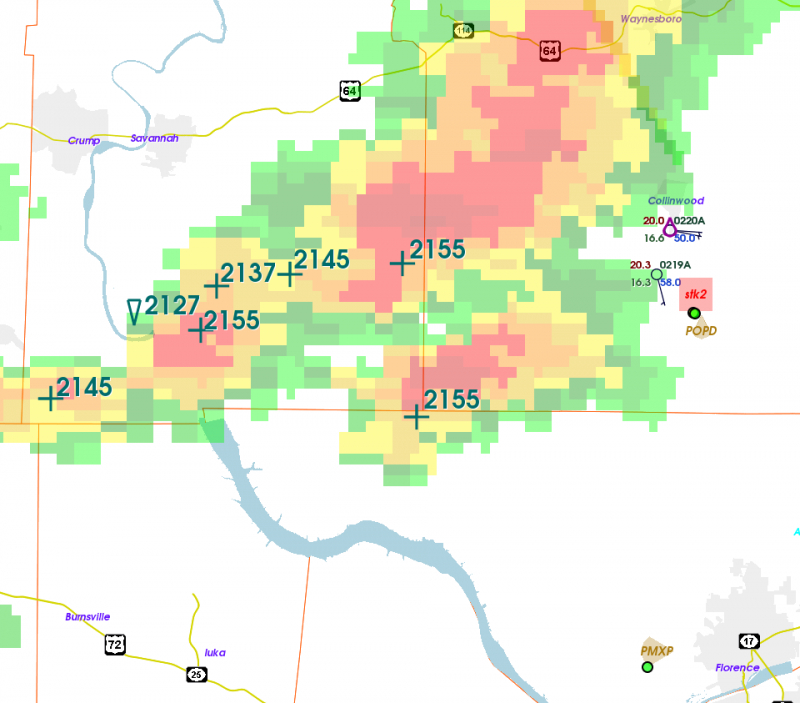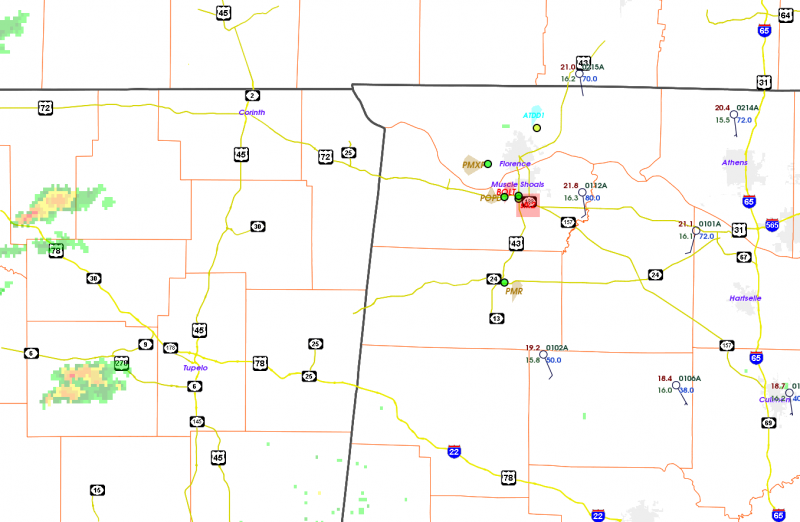Busy day. I wish I could write a cogent description of how things evolved in the VORTEX-SE domain today, but I really am unable! As with our other deployments, I would have been unable to forecast any of the evolution I observed beyond perhaps 30 minutes. And that may be giving me too much credit!
There were a series of supercells that moved along the TN/AL state line in the northern part of our Doppler area. We were able to deploy sticknets and disdrometers ahead of one of these early in its life cycle, and one of our teams reported a wall cloud, and another a clear slot. These storms intensified as they continued to move east, but we haven’t received any reports of serious tornadoes with these despite fairly strong and persistent mesocyclones.
After sunset, a blast of cells formed in MS and moved across our domain. This evolved into the form of a big bowed line of cells, and along the “bent-back” portion of this line we saw a number of areas of low-level shear. One of these developed into what was probably a significant tornado northeast of Hartselle AL, southwest of Huntsville. This was in one of our dual-Doppler lobes. We don’t yet know how significant this tornado was, but it had a prominent debris signature on dual-polarization Dopplers.
It was a tense ~hour for the UAH people at SWIRLL as this vortex moved toward Huntsville.
A couple of other of these low-level shears were well-sampled in our southwest dual-Doppler lobe; they were non-tornadic as far as we know.
Two or three tornadic supercells also occurred south of the bowing line of cells, but these were south of our observing domain.
So this was a good IOP… well observed from the perspective of dual-Doppler, soundings, and stesonet, and not surprisingly very difficult to observe with the fully mobile assets.
The scientists and teams have been working for 13 hours, and there are a lot of signs that the low-level shear is now not favorable for additional tornadoes. So operations are being wound down.
Erik Rasmussen


